Is Bleach Safe for Pool Maintenance? A Cost-Effective Guide
July 11th, 2024
July 11th, 2024
Summer afternoons often call for a refreshing dip in the pool. Yet, maintaining that crystal-clear water is no simple task. A multitude of pool owners grapple with the complexities of upkeep, particularly when it comes to keeping bacteria at bay. Among the myriad of solutions, bleach emerges as a surprisingly common topic of conversation. Questions abound: Is it safe? Effective? Economical?
Recalling my own childhood summers, I remember my father meticulously measuring chemicals, ensuring our backyard oasis remained pristine and inviting. Often, bleach was one of those substances he’d reach for, much to my youthful curiosity. Could something that brightens laundry and disinfects surfaces also serve a pool's needs?
The notion of using bleach in pools stirs both intrigue and caution. On the one hand, it's a familiar household item, readily available and relatively inexpensive. On the other hand, the idea of pouring a cleaning agent typically associated with laundry into a swimming environment sparks understandable apprehension. Understanding its composition, effectiveness, and potential impacts becomes crucial for any pool owner considering this option.
As we explore the possibilities and limitations of using bleach for pool maintenance, we'll delve into safe practices, compare it with traditional chlorine, and assess its role in your pool care routine. Whether you're hoping to cut costs or simplify your maintenance regimen, the journey to a clearer understanding begins here.
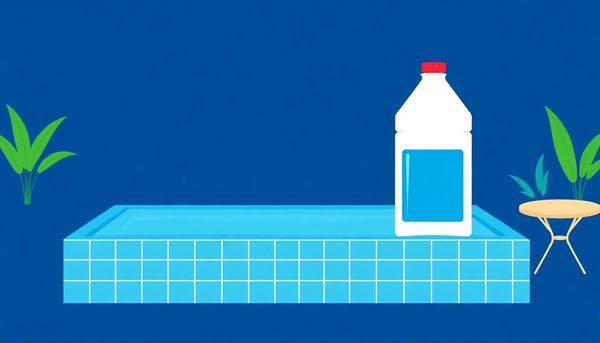
Bleach isn't just for laundry day; it can double as a budget-friendly pool sanitizer if used wisely. Before you head to the store, however, it’s crucial to understand how to handle bleach safely to keep both your pool and your loved ones secure. First, always check the label to ensure your bleach is 100% sodium hypochlorite without added fragrances or thickeners. My neighbor found this out the hard way when her pool turned into a bubble bath after she accidentally used scented bleach.
When adding bleach to your pool, it’s best to do it during the evening when the sun is less likely to burn off the chlorine quickly. Pour the bleach around the pool’s perimeter, carefully avoiding splashes on your skin or clothes. To prevent damage to your pool liner from concentrated bleach, make sure the filtration system is running. This will help distribute the chlorine evenly throughout the water.
It’s also wise to wear gloves and protective eyewear during the process. An unexpected splash can lead to irritation or worse, and nobody needs a surprise trip to the eye wash station. Furthermore, keep the bleach stored safely away from children and pets. A friend once left a jug out, and their curious cat managed to knock it over—not the kind of poolside drama anyone wants. With these precautions, you can harness the cost-saving power of bleach while keeping your pool a safe and inviting oasis.
Alternatives aren't just for creative cooking recipes; they can revolutionize pool care too. Imagine a sunny afternoon spent by your pool, knowing you’ve maintained it without breaking the bank. Traditional pool chemicals often come with hefty price tags, but savvy pool owners discover cost-effective substitutes hiding in plain sight. Baking soda, for instance, can double as a tool to raise alkalinity. A friend of mine swears by this method; she simply scoops it from her kitchen pantry, turning a mundane baking staple into a pool-maintenance hero.
Soda ash, found tucked away in laundry aisles, rivals expensive pH increasers. It’s a quiet powerhouse, nudging your pH back to balance without drama or a chemical parade. Ensure it's pure sodium carbonate, minus additives. I once underestimated its power, adding a touch more than needed—lesson learned: it’s potent and effective.
For lowering pH, think muriatic acid. Though it demands respect (and gloves), it’s a dual-purpose tool, both a cleaner and a balancer. An acquaintance once compared it to a stern but fair teacher, always delivering expected results as long as the rules are followed.
Bleach, the unsung household hero, can tackle pool sanitization. It might lack the convenience of tablets but compensates with its adaptability and cost-saving nature. A colleague uses it religiously, pouring carefully to avoid over-bleaching surfaces, proving that frugality doesn’t mean compromising quality. With these alternatives, maintaining your pool becomes less about spending and more about smart, efficient choices.
Crafting a harmonious blend of chemicals in your pool is like orchestrating a symphony—each element plays a crucial role. Balanced water chemistry not only ensures the crystal-clear appearance of your pool but also safeguards the experience of swimming in it. In my own backyard, I’ve found that maintaining this delicate balance starts with understanding the core components: chlorine levels, pH, alkalinity, and cyanuric acid.
Chlorine acts as the frontline defense against bacteria and algae, but it’s your pH level that dictates swimming comfort. Too high, and your eyes may sting; too low, and the water might corrode pool equipment. I remember a time my family had a barbeque by the pool; the smell of chlorine was overwhelming because we neglected pH balance. A quick dash of soda ash, sourced from the laundry aisle, corrected the pH and saved the day.
Then there’s alkalinity, the unsung hero that prevents wild pH swings. A sprinkle of baking soda occasionally does the trick here. And for chlorine stability, especially under the blazing sun, cyanuric acid is essential. Without it, you’ll find yourself endlessly adding chlorine, just as I once did during a particularly hot summer.
In short, the secret to effortless pool maintenance lies not in expensive products but in understanding each component’s role. Weekly testing is your best friend, and small adjustments can save you both headaches and cash.
A day by the pool should spell relaxation, not chemical mishaps. Handling chemicals with care isn't just about avoiding splashes on your clothes; it's about safeguarding your pool’s integrity and your health. Start with the basics: always read instructions on any product you use. Skimming through a label might seem tedious, but those small print warnings and measurements matter.
Years ago, I learned this lesson the hard way. Attempting to adjust my pool's pH without gloves, I ended up with irritated skin—not exactly what you want after a day of pool maintenance. Since then, I've equipped myself with gloves, goggles, and a good pair of old sneakers reserved solely for this task. These simple precautions have made all the difference.
When mixing or adding chemicals, always do so in a well-ventilated area. The fumes from certain products, like muriatic acid, are no joke and can cause respiratory discomfort if inhaled. And remember, never mix different chemicals together directly; this can lead to dangerous reactions. Instead, add each chemical separately, allowing time for circulation between additions.
Storage is another key aspect. Keep all chemicals in their original containers, away from direct sunlight and moisture. This prevents any degradation or accidental mixing. By taking these steps, you ensure that every swim is as safe as it is refreshing. After all, the goal is to create a sparkling oasis, not a chemistry experiment gone wrong.
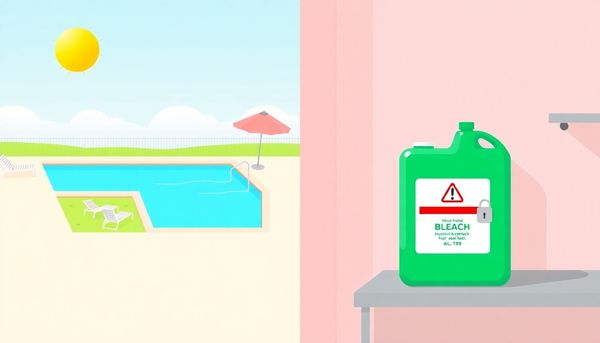
Transforming your pool maintenance routine into a budget-friendly endeavor doesn’t require a degree in chemistry, but rather a keen eye in the grocery store. Forget the pricey pool store chemicals; your local supermarket or hardware store might hold the keys to a sparkling pool. Just like discovering that baking soda is the ultimate multitasker in household cleaning, it’s also a hero in maintaining pool alkalinity. With a few pounds of this humble powder, you can tweak your pool’s alkalinity levels without emptying your wallet.
Consider soda ash, commonly found in the laundry aisle, a trustworthy ally. It doubles as a pH increaser and offers a straightforward solution to keeping your pool water balanced. Just half a pound per 10,000 gallons can nudge your pH up by 0.2. This means less hassle and more poolside relaxation while ensuring your water stays invitingly clear.
For those moments when the pool water seems to have lost its sparkle, a jug of bleach could be just what you need. Containing sodium hypochlorite, bleach stands as an effective substitute for liquid chlorine, provided it’s unscented and free of added ingredients. While you might need a bit more bleach compared to its concentrated pool store counterpart, your wallet will thank you for the savings.
And finally, don’t overlook simple mechanical fixes like aerating your pool's water. A water fountain or feature can naturally elevate pH levels, offering a chemical-free method of maintaining balance. With these affordable swaps, pool care becomes less of a chore and more of a clever exercise in resourcefulness.
In the world of pool maintenance, the allure of household alternatives cannot be overstated. One might wonder if pantry staples truly hold the power to replace those costly, branded chemicals. Remarkably, they do—and often with the same efficacy.
Take baking soda, for example. Its humble presence in the kitchen belies its strength in the pool, where it serves as a cost-effective alkalinity increaser. Just like a magic trick in a jar, a few pounds of baking soda can stabilize your pool's pH and alkalinity, ensuring the water remains inviting and gentle on the skin. Who knew that what leavens your cakes could also leave your pool sparkling?
Then there's the dual-purpose soda ash, a lesser-known but equally potent player. Typically found in laundry aisles, it doubles as a pH increaser. Just a sprinkle can nudge your pool’s pH into harmony, all without the premium price of branded alternatives. It’s a small adjustment with a large payoff, keeping your pool chemistry balanced.
And for those more challenging tasks, muriatic acid stands ready. Often already tucked away in garages for cleaning duties, it can also adjust pH levels with a precision that rivals any store-bought solution. While handling it calls for caution, its effectiveness is beyond question.
Embracing these household alternatives not only lightens the financial load but also gives a nod to simplicity. By opting for these accessible, everyday items, you maintain not just a sparkling pool but a clearer conscience and a fuller wallet.
Every swimmer cherishes the idea of diving into crystal-clear waters without the cloud of chemical confusion hovering over their heads. Here’s a straightforward approach for maintaining your pool’s water chemistry using household items. It’s surprisingly simple once you get the hang of it! Let's start with the basics: sodium bicarbonate, commonly known as baking soda, is your ally in balancing alkalinity. A gentle sprinkle of this kitchen staple will ensure your pool’s pH levels are stable, protecting your pool from corrosive tendencies.
Soda ash, or washing soda, found in the laundry aisle, can elevate your pH levels efficiently. When your pH dips below 7, half a pound of soda ash per 10,000 gallons of water will gently nudge it back up. For those who prefer a touch of nature, consider incorporating a water feature to naturally aerate and adjust pH without chemicals.
For lowering pH, muriatic acid stands as a robust alternative to commercial pH decreasers. This approach requires caution, though. Handling muriatic acid demands safety gear to protect against its corrosive nature. Adding about a pint per 10,000 gallons will bring that pH back to an ideal zone.
Chlorine remains essential, but skip the tablets and reach for liquid bleach. Make sure it's unscented and without additives. Pour around the pool's perimeter with the jets running to ensure even distribution. While it might require more volume than granules, its effectiveness keeps your pool sparkling. With these household substitutions, you can maintain a pristine pool without breaking the bank.
Chlorine is the unsung hero of pool maintenance, tirelessly working to keep your swimming area free from harmful bacteria and algae. Yet, optimizing its use can feel like decoding a complex puzzle. Thankfully, the solution might be closer than you think, tucked away in your laundry room. Instead of relying solely on expensive chlorine tablets or granules, everyday liquid bleach can be an effective substitute. Both options share the active ingredient, sodium hypochlorite, although their concentrations differ. Liquid chlorine typically offers a higher percentage than household bleach, making it a potent yet economical choice for pool care.
When choosing bleach, ensure it’s unscented and free from additional ingredients. A gallon per 10,000 gallons of pool water generally suffices for regular maintenance. However, if bleach is your go-to, a dosage adjustment might be necessary due to its lower concentration. To avoid mishaps with your pool liner, gently distribute the bleach around the pool’s perimeter while the filtration system circulates the water.
While liquid chlorine is a great ally, efficiency demands more than just adding chemicals. Protecting chlorine from the sun’s harsh rays with cyanuric acid, a chlorine stabilizer, can prove essential. Balancing this with regular checks of your water’s pH and alkalinity ensures that your pool remains a sparkling oasis rather than a chemistry experiment gone awry. So, next time you stock up on chlorine, remember: optimizing its use is as much about strategy as it is about measurement.
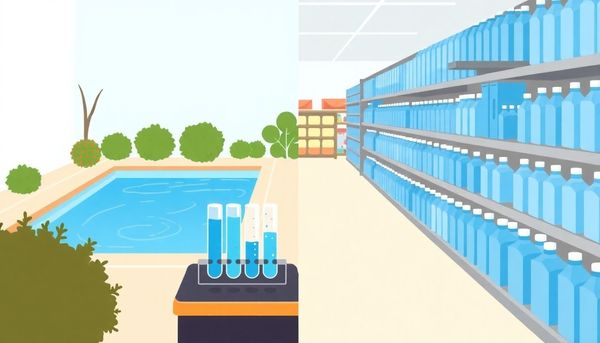
Swapping out pricey chemical solutions for items you might already have at home can be a game-changer for pool maintenance. Liquid chlorine, more commonly recognized as household bleach, is an excellent example of this cost-effective approach. Both contain sodium hypochlorite, which is the magic ingredient that keeps your pool sparkling clean. While bleach from the grocery store offers about 7-8% concentration, industrial liquid chlorine packs a punch with 10-12%.
It's not just about tossing in any jug you find lying around. Ensure your chosen bleach is free from added scents or ingredients. A label reading “chlorinating liquid” is often your best bet for a pool-grade solution. To achieve a consistent chlorine level, pour around one gallon of liquid chlorine per 10,000 gallons of water. Bleach, being less concentrated, will require approximately a double dose.
As you add it, let the pool jets run to distribute the chlorine evenly, avoiding any mishaps with bleaching the liner. One caveat of liquid chlorine is its bulkiness—stocking up can occupy more space than tablets or granules. However, for smaller pools, it's a viable alternative. Just remember, while bleach works wonders for everyday maintenance, you might need a larger quantity to tackle algae blooms or cloudy water. With the right balance and caution, liquid chlorine can be your pool's best friend, offering a fresh, clear swim without breaking the bank.
When considering alternatives to pricey pool chemicals, everyday household items offer surprising solutions. For those tired of shelling out for chlorine tablets, your laundry aisle holds a secret weapon: bleach. Both bleach and liquid chlorine share sodium hypochlorite as their active ingredient, with bleach typically boasting a 7-8% concentration. This makes bleach a commendable substitute for keeping your pool sanitized.
Next time you're adjusting pH levels, look no further than the baking aisle for soda ash, also known as washing soda. This budget-friendly alternative to pH increasers is solely composed of sodium carbonate. Just remember to choose a product without additives to ensure effective results. Simply add about half a pound per 10,000 gallons to raise your pH by 0.2, while keeping an eye on slight alkalinity increases.
And here's a nifty trick for those who prefer chemical-free solutions: aerating your pool water can naturally elevate pH without altering alkalinity. A fountain or waterfall feature can do wonders, adding elegance while optimizing your pool chemistry.
For those persistent stains and pH imbalances, muriatic acid, often found in hardware stores, serves as a potent substitute for pH decreasers. Handle with care, and it can efficiently lower pH levels, maintaining balance.
By integrating these common household items into your pool care routine, you not only cut down on costs but also demystify the pool maintenance process. This approach offers a wallet-friendly and environmentally conscious alternative, ensuring your pool remains a sparkling oasis.
Balancing water chemistry in a pool can be likened to crafting the perfect recipe—a little bit of this and a pinch of that, each element playing a crucial role in achieving that sparkling blue transparency. When considering alternatives to costly chemical products, household items provide surprisingly effective solutions. Baking soda is a prime example. While diving into the pantry for a cookie recipe, you might also grab baking soda to boost your pool's alkalinity. This simple ingredient prevents drastic pH changes, ensuring the water remains comfortable for swimmers.
Soda ash, often lurking in the laundry section, is another unsung hero. Its power lies in elevating pH levels, counteracting the acidic tendencies of pool water. On the flip side, if pH levels soar too high, reaching for muriatic acid can bring them back to a sweet spot. This common household cleaner can reduce both pH and alkalinity, but handle with care; it demands respect and proper safety gear.
For sanitizing, liquid bleach stands as a robust contender against traditional chlorine tablets. With sodium hypochlorite as its active ingredient, bleach effectively battles bacteria and algae. Pour it evenly around the pool with the jets running to avoid any unwanted bleaching of your pool liner. Each step in water chemistry optimization not only safeguards swimmers but also ensures a cost-effective approach to pool maintenance.
Rethinking the contents of your cupboard might just revolutionize your pool maintenance routine. Instead of shelling out for specialized pool chemicals, consider the power of everyday household products. Baking soda, for example, isn't just for fluffy pancakes or deodorizing your fridge. This humble powder, also known as sodium bicarbonate, can effectively elevate the alkalinity of your pool water. As a personal favorite for pool upkeep, I've found that about 1.5 pounds per 10,000 gallons does the trick to boost alkalinity by 10 PPM, saving a trip to the pool store and a chunk of change.
Equally transformative is soda ash, lurking in your laundry supplies under the alias of washing soda. With its active ingredient, sodium carbonate, it’s a go-to for adjusting pH levels. A modest half-pound addition per 10,000 gallons can raise your pool’s pH by 0.2. For a non-chemical solution, simply aerate your pool with a fountain or waterfall to see your pH levels climb naturally, a neat trick I stumbled upon during a warm summer weekend.
And let’s not forget the cleaning stalwart, bleach. With the same active ingredient as liquid chlorine, household bleach can keep your pool sparkling and bacteria-free. Just be sure to opt for bleach without added fragrances or additives. When using it, distribute about a gallon for every 10,000 gallons of pool water, pouring it carefully around the perimeter while the jets are running. This method ensures effective distribution while avoiding any unintended bleaching of your pool surfaces.
By using these common household items, you can maintain your pool effortlessly and economically. Each of these alternatives offers a budget-friendly and equally effective way to manage water chemistry without compromising on pool health.
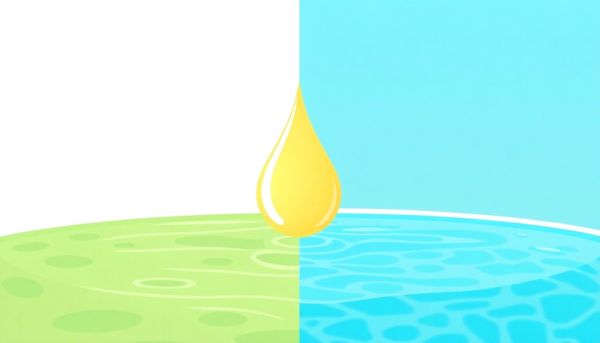
Exploring a cost-effective approach to pool maintenance often leads to discovering the multifaceted benefits of soda ash, also known as washing soda. Not only is it a staple in the laundry aisle, but this unassuming compound is a powerful pH increaser for your pool, offering a budget-friendly alternative to branded products. When your pool water's pH dips too low, it can lead to corrosion of equipment and irritation for swimmers. This is where soda ash graces the stage, deftly raising the pH to more balanced levels.
A personal anecdote from a sunny summer weekend reveals how soda ash saved the day. My family was preparing for a pool party when we noticed the pH levels had plummeted. A quick trip to the local store for soda ash, and soon enough, the pool was welcoming guests with perfectly balanced water. It's fascinating how half a pound of this common household product can elevate the pH by 0.2 for every 10,000 gallons of water, effectively reviving the pool's chemistry.
While using soda ash, it's essential to ensure it is 100% pure sodium carbonate, devoid of any additives. This guarantees the effectiveness and safety of your pool's environment. Remember, adjusting pH also nudges alkalinity, though the shift is more pronounced in pH. Pool owners like us have found this dual action a convenient bonus, fine-tuning the water balance with a single application.
In maintaining a sparkling pool without breaking the bank, resourcefulness can be your best ally. Ordinary household items often double as effective pool maintenance solutions, reducing the need for expensive specialty chemicals. For instance, sodium bicarbonate, more commonly known as baking soda, is your go-to for raising alkalinity. Imagine the ease of reaching into your pantry instead of making another trip to the pool store. Just a few pounds can adjust your pool’s water chemistry, gently nudging the pH and alkalinity to ideal levels.
Then there's soda ash, or washing soda, a staple in the laundry aisle. Its primary component, sodium carbonate, is identical to that found in commercial pH increasers. By adding soda ash to your pool, you can elevate the pH efficiently. However, ensure purity and steer clear of additives that might interfere with the water chemistry. You’ll find it cost-effective and readily available, saving trips and dollars alike.
Muriatic acid, often a household cleaning staple, is adept at lowering pH and alkalinity. While it requires careful handling due to its potency, its results are effective and swift. With proper safety measures, this alternative can simplify your pool maintenance routine.
Liquid bleach or non-scented household bleach serves as an effective chlorine source, substituting pricier chlorine tablets. Though slightly bulkier, its sanitizing prowess remains intact. This simple switch can streamline your pool care while offering a frugal alternative. By opting for these household solutions, you transform everyday chores into cost-saving strategies. Your pool remains pristine, and your wallet stays happy.
When handling chemicals like bleach for pool maintenance, safety should be your top priority. Bleach, while effective in sanitizing pool water, requires careful handling to avoid accidents or damage. Always begin by reading the label on any bleach product to check for additional ingredients, and ensure it’s 100% sodium hypochlorite without added scents or dyes.
Equip yourself with the right gear. Wearing gloves is non-negotiable, as they protect your skin from irritation or burns. Goggles are another essential, guarding your eyes against splashes, which can cause severe irritation or injury. When pouring bleach into your pool, do so slowly and deliberately around the perimeter, particularly when the pool pump is circulating water; this method helps distribute it evenly and prevents it from settling on surfaces like the pool liner.
Ventilation is crucial if you're mixing bleach with other chemicals, so if you're working in an enclosed pool area, keep air flowing to disperse any fumes. Additionally, store bleach in a cool, dry place, away from direct sunlight and out of reach of children and pets. An incident from last summer comes to mind: a neighbor accidentally left bleach in the sun, and it led to a hazardous spill when the container expanded and cracked.
Lastly, always measure your bleach carefully, using the correct amount based on your pool's volume—overuse can lead to dangerously high chlorine levels. By following these guidelines, you ensure not only a clean pool but also a safe environment for everyone to enjoy.
Tending to a pool often feels like juggling a chemistry set, where the key to success is balance. Each ingredient in your pool's water serves a distinct purpose, creating a harmonious environment essential for both safety and enjoyment. Let's consider alkalinity, the unsung hero that shields pH levels from erratic swings. By using something as simple as baking soda—yes, the same one lurking in your pantry—you can maintain stability. A sprinkle here and there ensures that acidity doesn't corrode your pool's surfaces or irritate swimmers' eyes.
Meanwhile, soda ash is your ally against low pH. This common item, often found with laundry detergents, raises pH levels by releasing sodium carbonate into the water. Imagine how it gently nudges the pH scale back to its sweet spot, ensuring comfort and efficiency in sanitization.
Keeping tabs on these levels is not just a task; it’s a ritual. Weekly testing becomes a reassuring habit, a quick dip of a test strip offering insights into the microscopic world beneath the surface. Adjustments, when needed, are simple acts—like adding a dash of baking soda or a trickle of soda ash, much like seasoning a pot of soup to perfection.
Balancing water chemistry with household items not only eases the financial burden but fosters a deeper connection with the living body of water in your backyard. In this way, maintenance transforms from chore to craft, blending science with intuition.
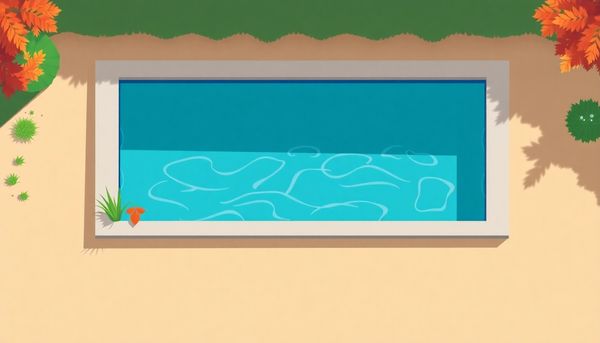
Tucked away in your kitchen pantry or nestled on the shelves of a local grocery store are the unassuming heroes of pool maintenance. You don't always need to turn to pricey specialist chemicals to ensure your pool sparkles under the sun. It's astonishing how many common household products can double up as effective pool cleaners. Let's explore some of these everyday items that are more than up to the task.
Baking soda, for example, is not just for cookies. Known chemically as sodium bicarbonate, this simple powder can adjust your pool's alkalinity with ease. It's cost-effective, and with a bit of know-how, it can save you a trip to the pool supply store. You'll only need about 1.5 pounds for every 10,000 gallons to increase the alkalinity by 10 PPM—a small investment for significant results.
Meanwhile, the laundry aisle reveals another hidden gem: soda ash. This is your go-to for raising the pH levels in your pool. With its active ingredient, sodium carbonate, soda ash can gently nudge your pool's pH back into balance. Start with half a pound per 10,000 gallons to make a noticeable difference.
And don't overlook the power of plain, unscented bleach. With its sodium hypochlorite content, bleach can effectively sanitize your pool, mirroring the action of liquid chlorine but at a fraction of the cost. Just remember to handle it carefully to preserve your pool’s surfaces.
These household products might not wear the flashy labels of specialty pool chemicals, but they certainly know how to get the job done, keeping your pool pristine without breaking the bank.
Instead of raiding the pool store's shelves, turn to the unsung heroes lurking in your laundry room and kitchen pantry. Baking soda, for instance, isn't just for conquering odors in the fridge—it’s also a powerful ally for raising your pool’s alkalinity. This humble powder, when introduced at about 1.5 pounds per 10,000 gallons, nudges your alkalinity up by 10 PPM. As it works its magic, you might notice a slight boost in pH as well, saving you the extra expense and packaging of specialized alkalinity increasers.
Over in the laundry aisle, soda ash, or washing soda, offers a budget-friendly substitute for pH increasers. Composed of sodium carbonate, it's a straightforward option to adjust your pool's pH. Half a pound per 10,000 gallons typically raises the pH by 0.2, depending on your starting point. Just ensure it’s pure, without additives, for the best results.
For those moments when your pool's pH insists on being high, consider reaching for a bottle of muriatic acid. While it requires careful handling, a pint can deftly lower the pH between 7.8 and 8.0 in a typical pool. Always prioritize safety, donning protective gear and following precise measurements to avoid mishaps.
And for sanitizing? Liquid bleach or chlorine is your answer. Though less concentrated than pool-specific products, a gallon for every 10,000 gallons of water keeps bacteria at bay. Just ensure it's unscented, pure sodium hypochlorite to maintain clarity without the extra chemicals.

This article provided insights into maintaining your pool. Start your pool care journey today!
Want to become a pool maintenance expert? Our free Pool School course covers everything you need to know about pool care. From basic maintenance to advanced troubleshooting, you'll learn how to:
Join over 10,000 pool owners who have already transformed their pool care routine. Get started with our free Pool School course today!